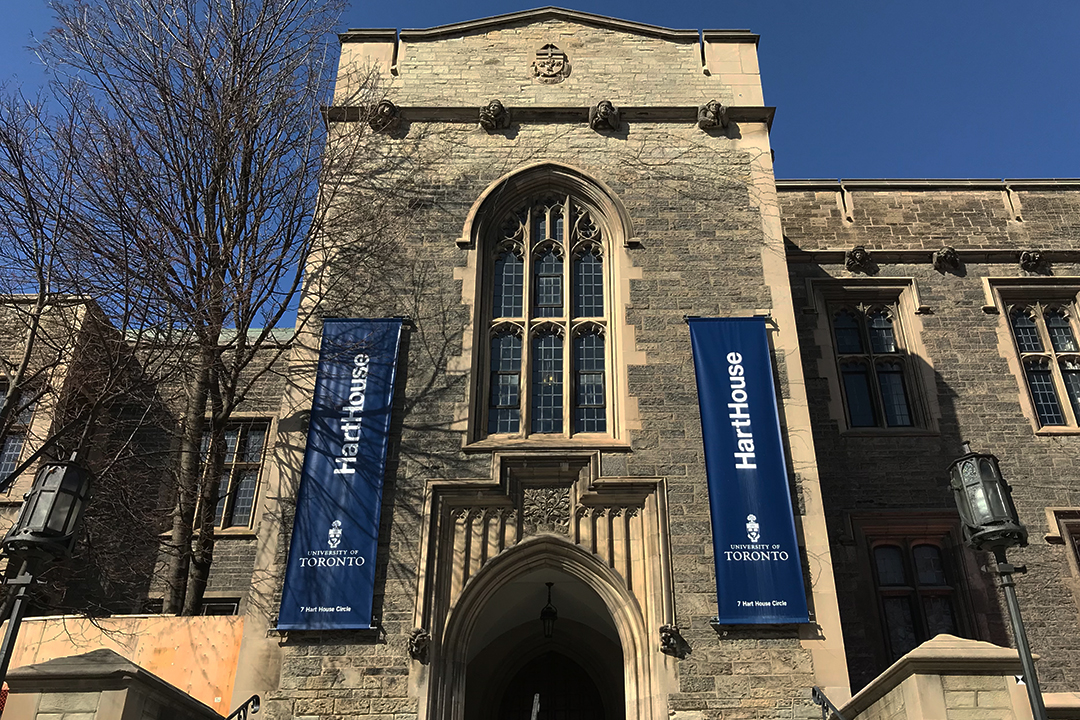Pow Wow hip-hop dance workshops, mental health and kiki ballroom classes, and meditation and yoga are just some of the offerings at Hart House’s new wellness initiative. Unlike typical well-being classes, those featured by the Well Being Collective @ Hart House stand out as an exploration of wellness through the lens of predominantly Indigenous and Black experiences and practices. In addition to featuring these classes with community or campus partners, the collective also produces podcasts and hosts events.
The Varsity sat down with founding and contributing members of the project Olivia Allen, Ezi Odozor, Rebeckah Price, and Jenny Blackbird to gain insight into the driving mechanisms of the project and the stories they had to share.
Motivation for project
Price, a wellness advocate and yoga teacher, has noticed that students who are racialized or from marginalized communities have different experiences at university, which may not be seen or heard. Her desire to create a space for these students, who at times feel a lack of access to support and community within the university, caused her to combine cultural practices with typical wellness practices.
Price hopes to “[legitimize] the importance for racialized students and communities and other marginalized communities to see and value the importance of well-being.” Her approach allows for these students to experience wellness that incorporates mental, physical, and spiritual health. It also takes on a decolonial lens, considering the importance of who controls narratives of wellness and who is seen as the teacher and expert in wellness experiences.
Diving into the complexities of addressing well-being in the context of racialized people, Blackbird, an Indigenous person who is featured on episode three of the Well Being Collective’s podcast, shared the impact of intergenerational trauma on Indigenous wellness in particular.
Blackbird has family members younger than herself who went to residential school. These schools were built with the colonial intent of removing Indigenous children from their communities and erasing their identity — a practice considered cultural genocide. She shared how such circumstances caused many of her relatives to live with direct trauma, which then also exists with their children.
“When you talk about wellness and Indigenous wellness, there’s so much that’s still triggering and really hard,” she said. Wellness practices then need to be tailored to Indigenous experiences and practices.
As a Black person in Toronto, Price shared that she understands the embodiment of trauma that Blackbird described. She feels the ongoing impact of collective history and trauma tied to this one part of her identity. Having to police her tone in conversations and feeling the reality of police brutality are just some of the constant tensions that Price says contribute to the process of connecting trauma to wellness when creating a space of healing.
Creating community
Students engage their experiences with wellness through the practice of invitation, according to Odozor, a Black writer and student support specialist. This is a distinctly anti-colonial sentiment: “Rather than deciding what all things have to be all the time forever, putting the firm last and definition on something, it’s a practice of exploration.”
This collective aims at building a community, and in this way the creators of the project invite not only current and previous students but also staff and faculty in the community to engage in the initiative. Building on the importance of community in wellness, Price shared that as a teacher, she doesn’t roll straight into practice. Rather, she takes the time to have important conversations with students who come in: “We want to create that community because we want you to feel seen,” she said.
Price noted that many wellness spaces can seem like sterile environments — such as a greeting with the front desk person, followed by quiet individual practice before rolling up your mat to leave. Ultimately, the emphasis is on tackling issues students may be facing not just through movement, but through conversation, creating a community that fosters a sense of belonging.
Looking to the future of building community after the pandemic, or in the fall when the campus reopens, Allen shared that the team is looking forward to building an in-person community while still expanding the online community that they’ve built.
While Allen recognized that there have been some surprises and challenges with fostering an online community, she has also observed the amount of engagement, conversation, and space holding regardless. Being online has allowed the Well Being Collective to act as an accessible space with options for members when they have the time and when they need it.
Editor’s note (March 22): The article has been updated to clarify the name of the collective.
Editor’s note (March 29): This article has been updated to clarify that the Well Being Collective offers these events in collaboration with community and campus partners.


